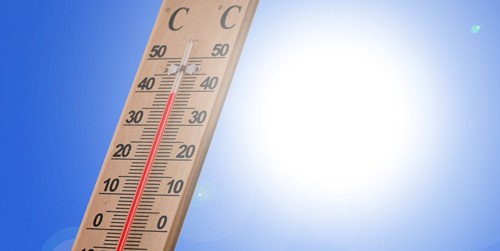
Extreme heat can cause a plethora of problems for both you and your household. From heat-related illnesses to simple heat exhaustion, it’s important to keep high temperatures at bay. But how do you keep the heat down while avoiding excessive power bills?
Here are a few ways to keep yourself cool without overheating your wallet:
Use the right air conditioning
While using an air conditioner to combat extreme heat seems simple enough, there are factors to consider before turning the temperature down to 50. One of the most significant items to remember is the size of your unit and the space it’s attempting to cool. This is particularly critical for those with window air conditioners or portable air conditioning units.
Make sure the BTUs (British Thermal Units) are coherent with the size of the room you’re attempting to cool. So, a unit with a maximum output of 7,000 BTUs, for example, shouldn’t exceed a room that’s about 300 square feet. Likewise, to help keep your power bill low, be sure not to get a unit that is too large for your room either.
An oversized unit could lead to venting issues or increased power consumption. Getting appropriate size will help maintain normal body temperature levels while helping to keep your enclosed area properly cooled.
Take a cool shower or bath
Taking a cold shower on particularly warm days is incredibly refreshing for some. In fact, taking a cooler shower on warm days not only saves on hot water factors, but can help bring your body temperature to a more reasonable level. It is crucial, however, to avoid excessively cold showers during heat waves or extremely high temperatures.
Jumping from one extreme to the other could have adverse effects on your body, such as cramps or skin irritation. If you feel the need to take excessively cold showers during heat waves, be sure to check with your doctor to ensure you won’t damage your body.
Hydrate
Hydration is a key player in staying cool in a hot environment. When you drink plenty of fluids throughout your day, you help maintain your body temperature, which could help you feel the true indoor temperature over your body heat.
Weather strip doors
One of the more cost-effective ways to beat the heat is to weather strip your doors, especially if you’ve noticed an influx in your power bill. Energy and cool air may leak through old weather stripping or areas where your home isn’t as sealed as it used to be. However, replacing old weather stripping can be fairly simple.
Gently pull the old weather stripping from the door, starting with a corner. For those with screws or nails, carefully remove them before attempting to remove the weather stripping. Once removed, clean any excess adhesive from the door. Then, remove the backing from your new weather stripping and apply it where the old stripping was.
Other items such as heavy window coverings, such as blackout curtains, can help keep excessive heat from entering your home.
Keeping your home cool during times of high heat is important for keeping you and your household safe during times of extreme heat. Heed any heat advisories or warnings in your area, as they are meant as heat safety precautions.
About the Author

Claire Rainville
I have been conducting business in this local area for 20 years as a full-time real estate broker. My priority as a real estate broker is to ensure my client’s satisfaction through providing them top-class service specifically catered to their individual needs. As your agent, I will effectively communicate with other parties involved in your transaction to ensure the purchase or sale of your home/land/investment property goes smoothly. I use my high-touch philosophy and high-tech resources to attractively market my listings as a seller’s agent, and will proactively use my connections as an experienced real estate broker to find my clients’ their dream home. I am also available via phone, email or text messaging to accommodate my clients’ various schedules and/or preferred mode of communication.
